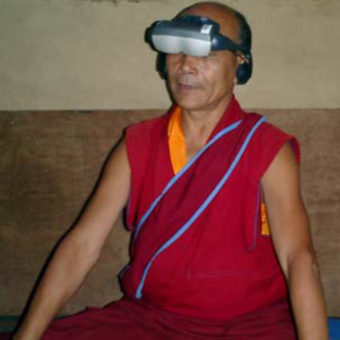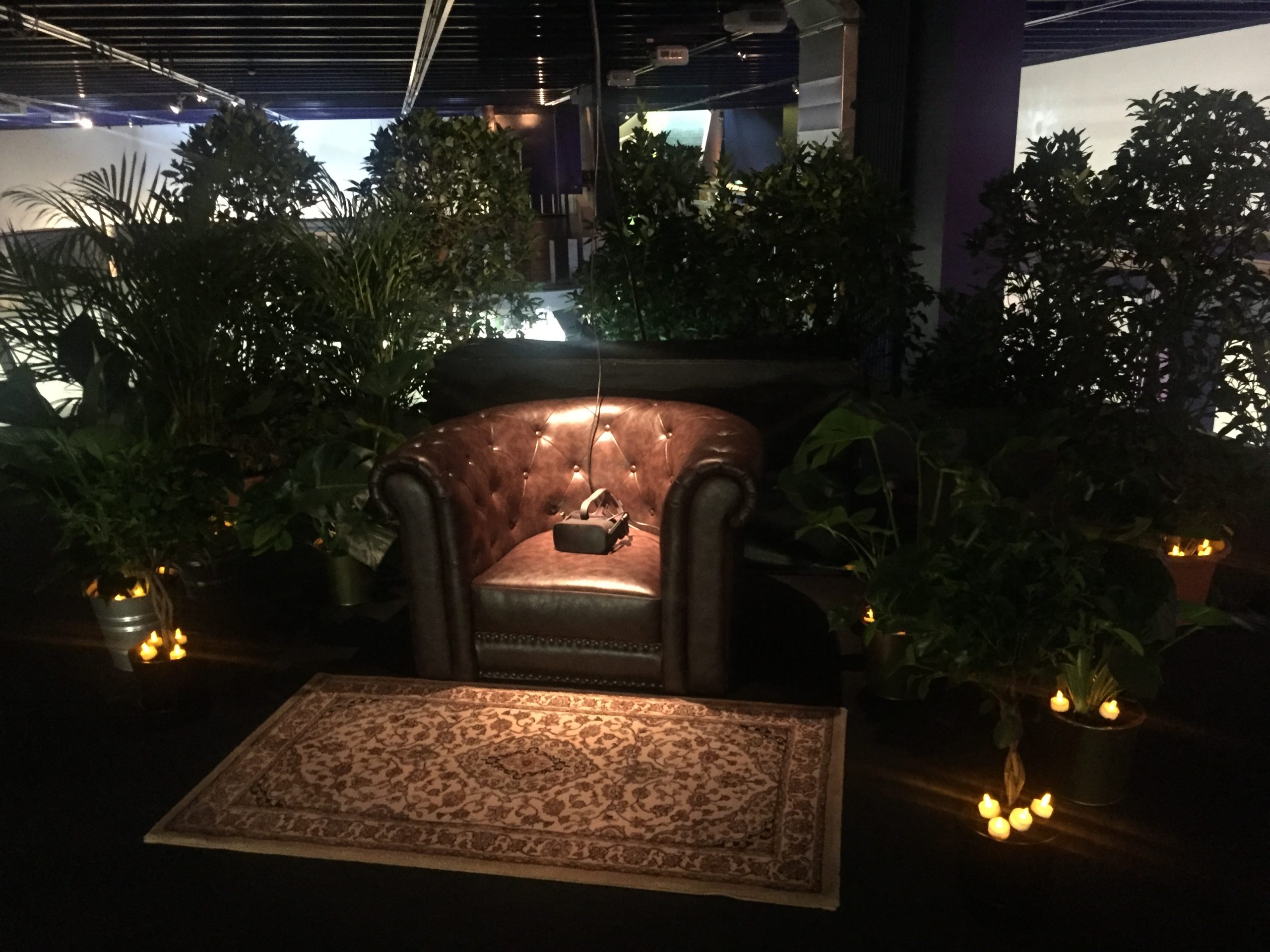FIGHT! (2017)
“Fight is a seminal piece, … one of the most compelling (and mind bending) pieces I’ve seen in VR. ”
– Robin McNicholas, founder of Marshmallow Laser Feast.
“oh dude… that’s fucked… ugh… AAAAAH… MOTHER FUCKER… oh shit… (the music is beautiful)”
– Golan Levin, Professor of Electronic Art, Director of Frank-Ratchye STUDIO for Creative Inquiry, Carnegie Mellon University.
Introduction

“We see things not as they are, but as we are.”
FIGHT! is a Virtual Reality artwork where the viewer’s two eyes are presented with radically different images, resulting in a phenomenon known as binocular rivalry. The conscious mind does not ‘see’ both images, but unpredictably alternates between them with unstable, patchy transitions depending on the viewer’s physiology. Even though everybody is presented with the same imagery, your conscious visual experience will be different to mine. I cannot see what you see, you cannot see what I see. And what we both see, is different to what is actually presented. We are all unable to fully perceive the ‘reality’ before us.
I go much deeper into the motivations behind this work in this essay, and in Part 3 of this presentation.
Description
FIGHT! is a Virtual Reality artwork in which the viewer’s two eyes are presented with radically different images, resulting in a phenomenon known as binocular rivalry. Presented with rival signals, the conscious mind does not ‘see’ – or perceive – both images blended as one might expect, but instead ‘sees’ an unstable, irregular, animated patchwork of the two images, with unpredictable swipes and transitions depending on the viewer’s physiology. Everybody will ‘see’ something unique, even though they are presented with the same images. The act of looking around and exploring the rival stimulus allows the viewer to probe which sections of each signal becomes dominant and which is suppressed, further underlining the notion that seeing – and in broader terms sensing and perception in general – is an active process, driven by movement, expectations and intent.
The picture we see in our conscious mind is not a mirror image of the outside world, but is a reconstruction based on our expectations and prior beliefs. Even though everybody is presented with the exact same imagery in this work, your conscious visual experience will be different to mine. I cannot see what you see, you cannot see what I see. And what we both see, is different to what is actually presented. We are all unable to see the entirety of the ‘reality’ before us.
The work is part of a broader line of inquiry about self affirming cognitive biases, our inability to see the world from others’ point of view, and the resulting social polarisation.
Motivations
There’s a few motivations behind this work:
i) what we perceive to be real, what we see, is a reconstruction in our minds, a simplified model of the world, limited by our biology and physiology,
ii) perception, including vision, is an active process, it requires action and integration
iii) the actions that we take, affects the reality and the meaning that we construct in our mind;
iv) perhaps most importantly: even when presented with the same information, the same images, everybody will experience — will see — something unique and personal, which nobody else can see or maybe even understand.
I’m interested in these ideas at a low-level, regarding our senses, particularly vision, and perception. But also conceptually at a higher level regarding how we make meaning and what we consider to be truth; our biases and prejudices, how we interact with each other as a result of this, and its impact on society and politics. Especially it seems right now our societies are torn more than ever, at least within my almost half a century of existence. And these gaping wounds seem to me to be partially the result of our clear inability and refusal to see the world from other peoples perspectives.
FIGHT explores these themes using Virtual Reality (though the experience is as opposite as one can get to VR), Binocular Rivalry and various interaction models inspired by these ideas.
I have no idea what anybody ‘sees’ when they experience this work, even though everyone is presented with the same visuals. Of course one might point out that this is actually the case with everything. When you look at any image, or read any piece of text, or even as you read these very words, I have no idea what they mean to you — but that’s at a semantic level. Here I wanted to try and create something where the conscious visual experience itself is different for everyone.
Everybody literally sees something unique.
I go much deeper into the motivations behind this work in this essay, and in Part 3 of this presentation.
Acknowledgements
Commissioned by STRP
Score by Rutger Zuydervelt (Machinefabriek)
Producer: Juliette Bibasse
Assistant: Rob Homewood






